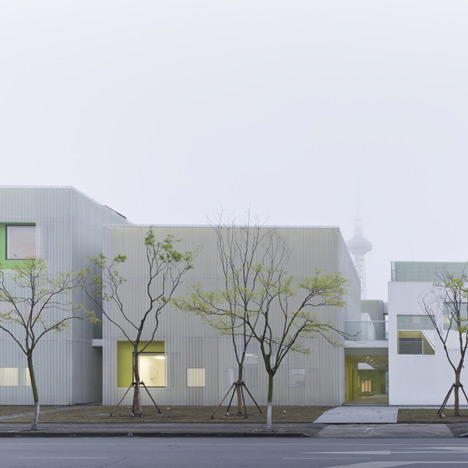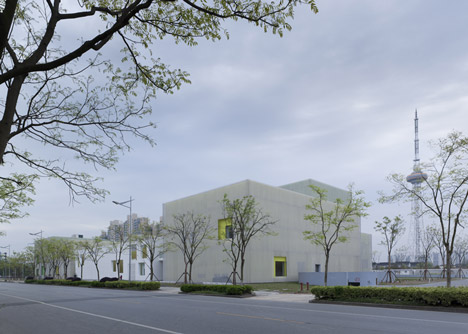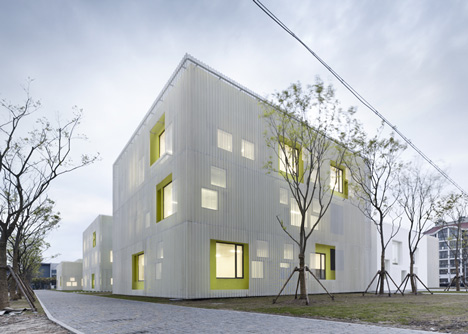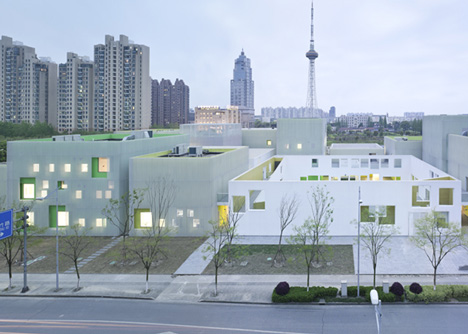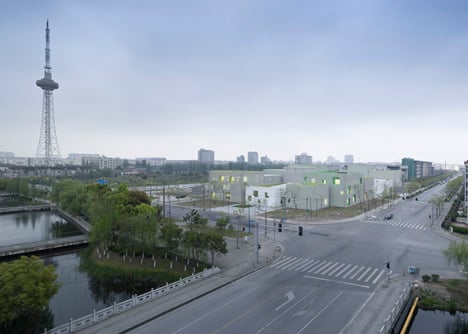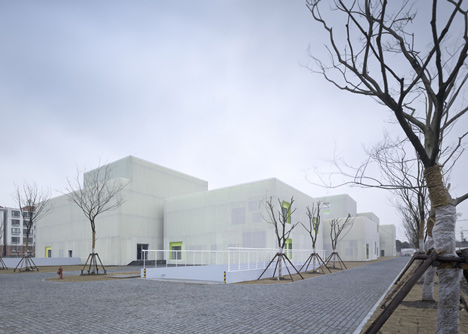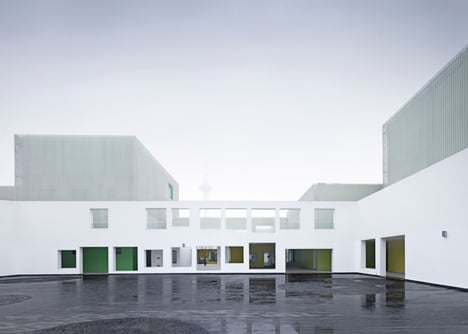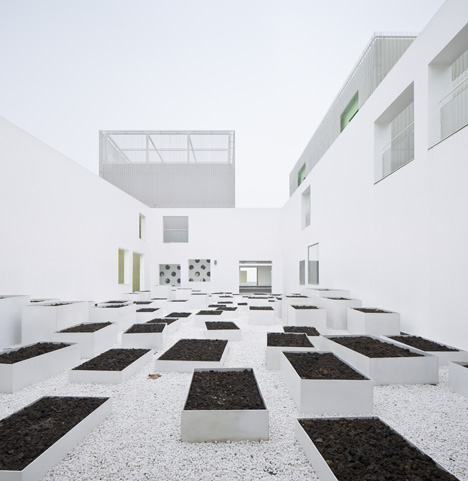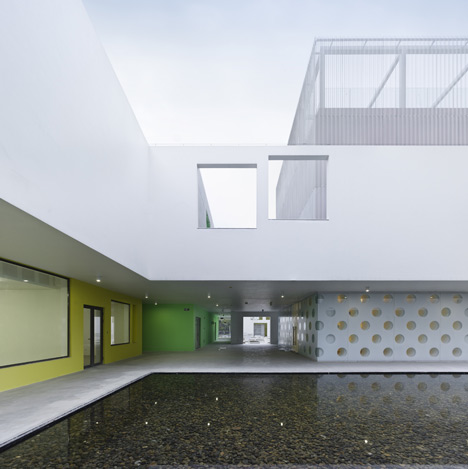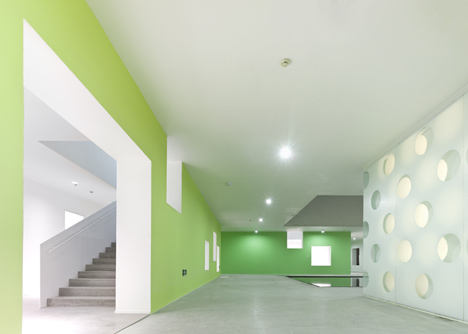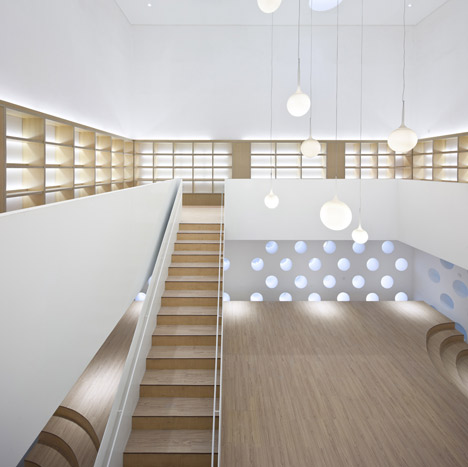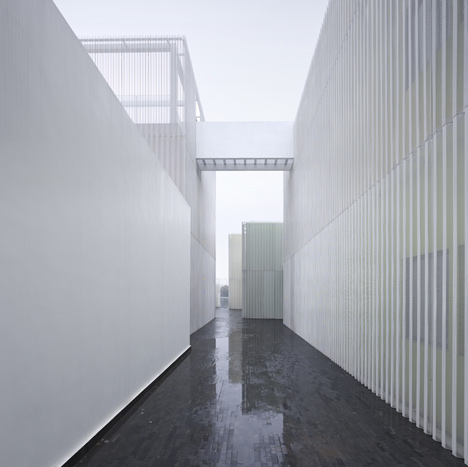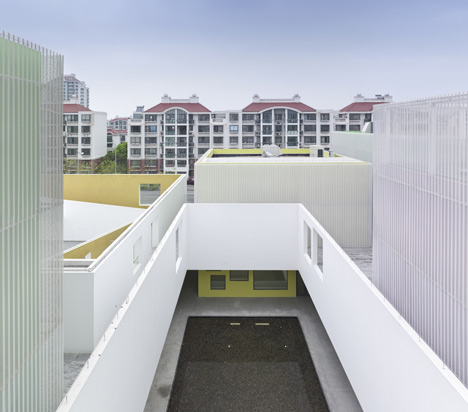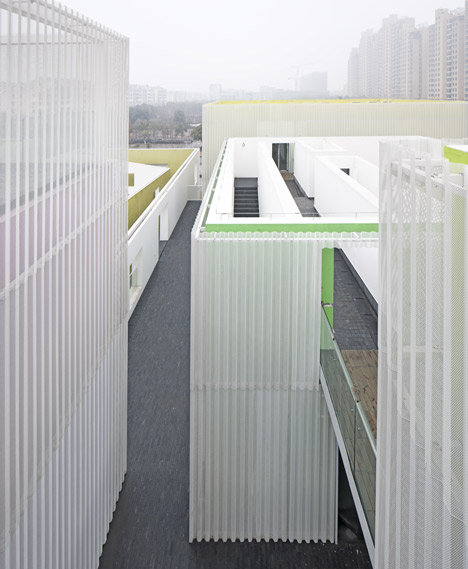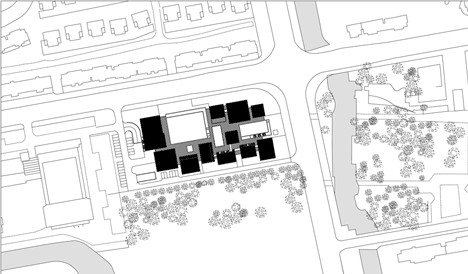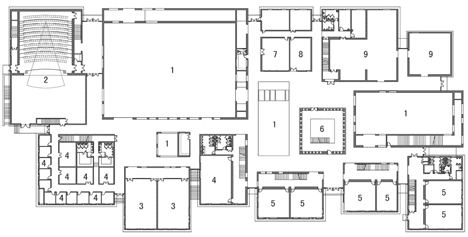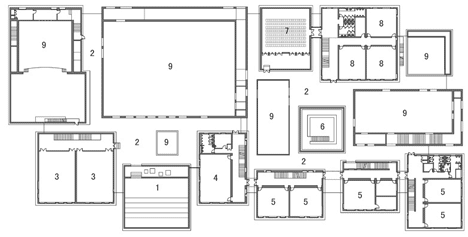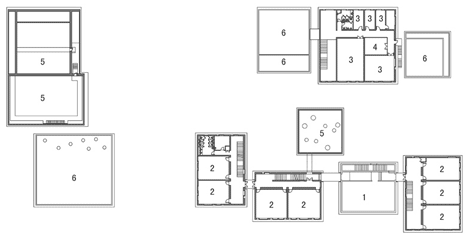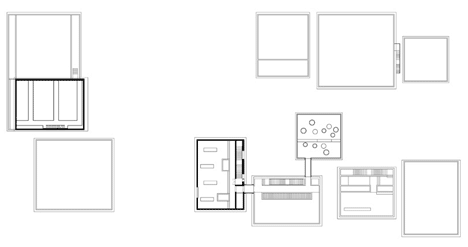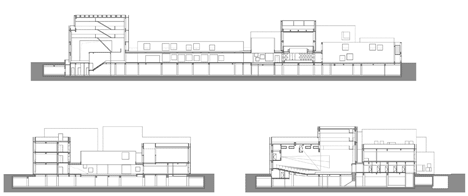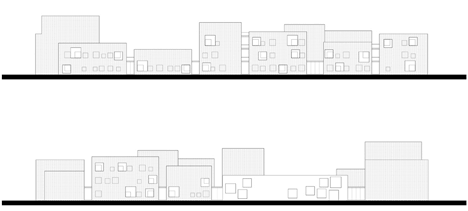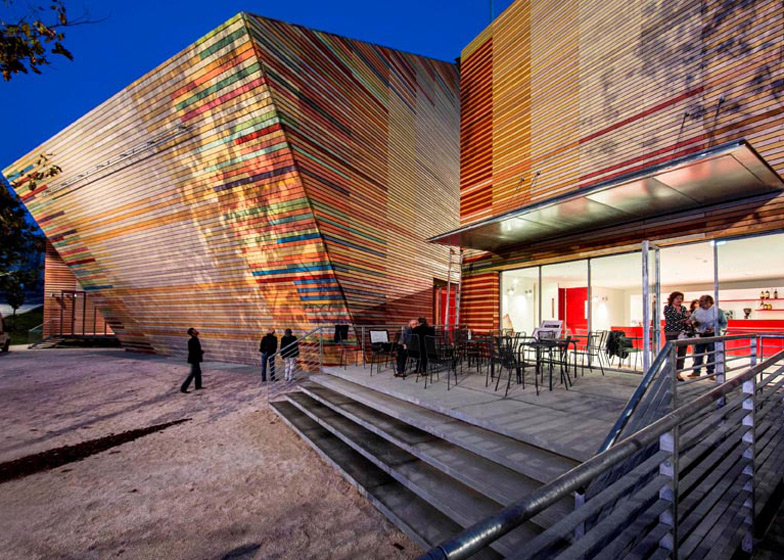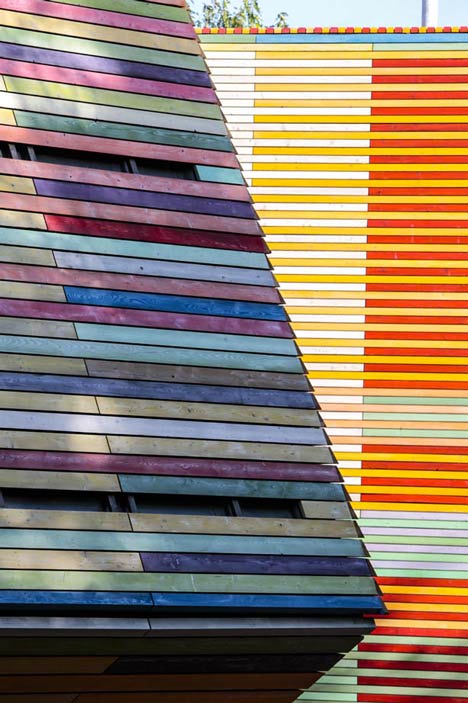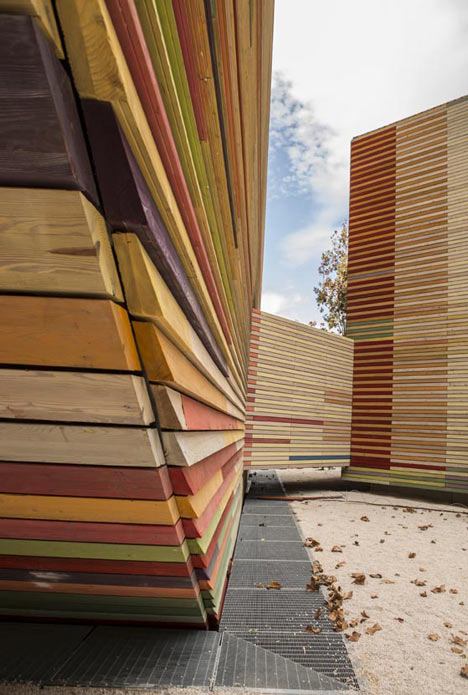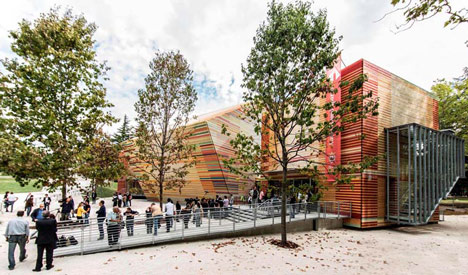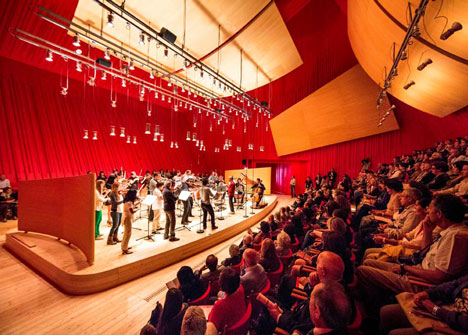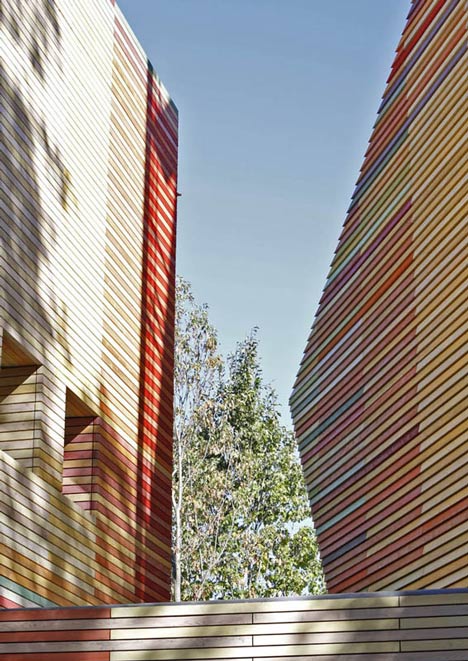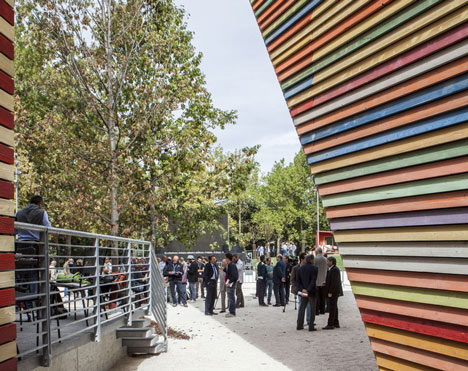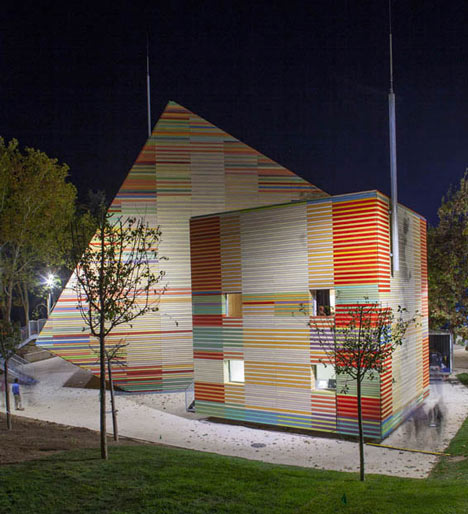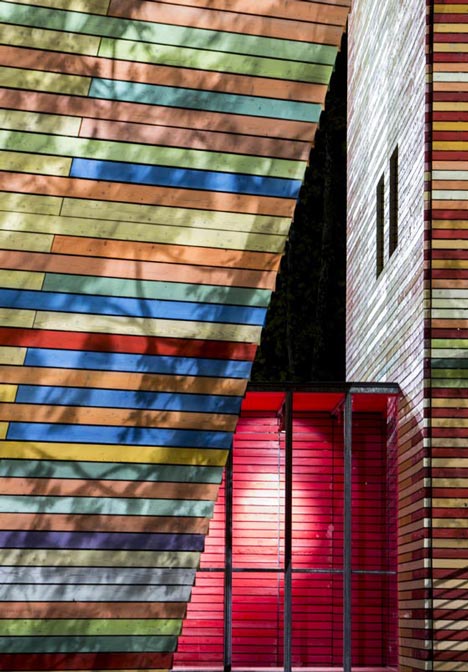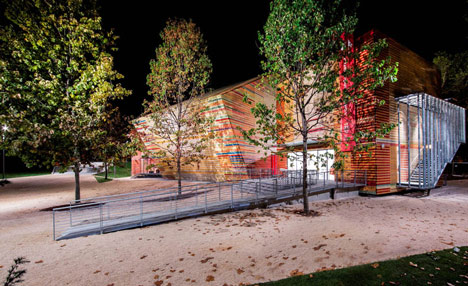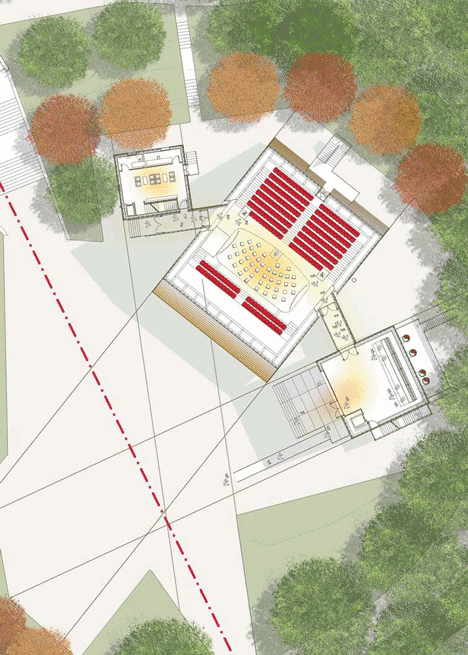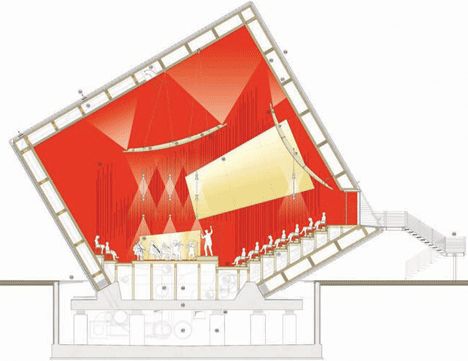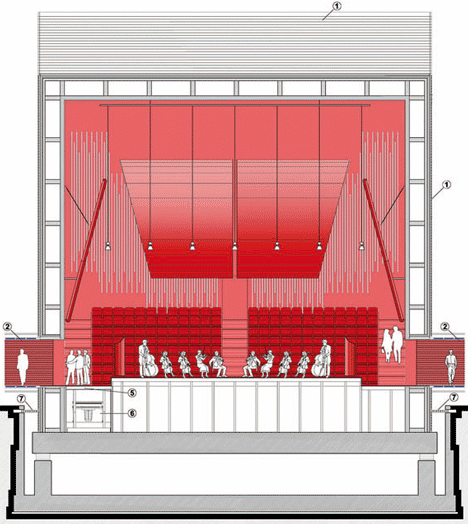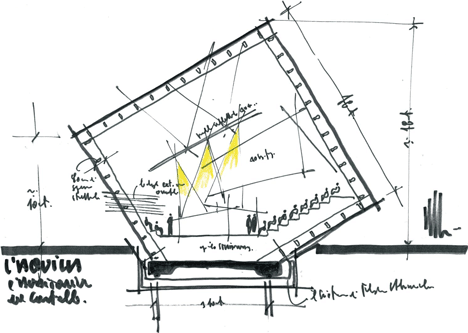'via Blog this'
Arte Charpentier Architectes | The Shanxi Grand Theater
 After Shanghai, Arte Charpentier Architectes builds the new Grand Theater in Taiyuan. The «gate» of Taiyuan – Taiyuan is situated in the province of Shanxi in the northeast of China. In the centre of a basin overhung by two mountains ranges – the Lu¨liang Mountains to the west and the Taihang Mountains to the east – the city is currently undergoing rapid development, as a result imposing reflections on its planning and scope. The project of the Shanxi opera house in Taiyuan is at the heart of these challenges. Situated in the new district of Changfeng, in the heart of a «green island», it participates in the creation of a new centrality for the city.
After Shanghai, Arte Charpentier Architectes builds the new Grand Theater in Taiyuan. The «gate» of Taiyuan – Taiyuan is situated in the province of Shanxi in the northeast of China. In the centre of a basin overhung by two mountains ranges – the Lu¨liang Mountains to the west and the Taihang Mountains to the east – the city is currently undergoing rapid development, as a result imposing reflections on its planning and scope. The project of the Shanxi opera house in Taiyuan is at the heart of these challenges. Situated in the new district of Changfeng, in the heart of a «green island», it participates in the creation of a new centrality for the city.An urban sculpture
This building is composed of a hall with 1,600 seats in the north part of the building and two halls with 1,000 and 600 seats in the south part. For the halls and the interior core of the building, the work of the architects of Arte Charpentier Architectes covered the rationality and purity of the volumes. The metal skin of the building has been designed to play with light while reflecting the lights of the sky in a sensitive and varied way. The building is thus designed like an urban sculpture, ordering and qualifying all the surrounding space. It thus becomes an element of social and urban identity, both an iconic building for the city and a place of appropriation for the inhabitants.
This building is composed of a hall with 1,600 seats in the north part of the building and two halls with 1,000 and 600 seats in the south part. For the halls and the interior core of the building, the work of the architects of Arte Charpentier Architectes covered the rationality and purity of the volumes. The metal skin of the building has been designed to play with light while reflecting the lights of the sky in a sensitive and varied way. The building is thus designed like an urban sculpture, ordering and qualifying all the surrounding space. It thus becomes an element of social and urban identity, both an iconic building for the city and a place of appropriation for the inhabitants.
An open stage
The particularity of the building is to be a kind of theatre opening onto the town. Through the arrangement of a window in the heart of the building, this itself becomes an open stage. Shows can then take place on the esplanade created under the building, thus offering a prospect from the Town Hall square and a view of the river. This «window» then contributes to enhancing the building within the whole urban composition.
The particularity of the building is to be a kind of theatre opening onto the town. Through the arrangement of a window in the heart of the building, this itself becomes an open stage. Shows can then take place on the esplanade created under the building, thus offering a prospect from the Town Hall square and a view of the river. This «window» then contributes to enhancing the building within the whole urban composition.
Official opening: April 2012
Arte Charpentier Architectes
Arte Charpentier Architectes, present in China for over fifteen years, has become famous with emblematic buildings such as the Shanghai Grand Theater, the Nanjing Road, the Century Avenue, the Luwan District, Celebrations Plaza (Expo 2010) and the Fashion Center, delivered in 2011, redeveloping of a large industrial site; or, in other provinces such as Xinjiang with the Ala’Er Museum. Arte Charpentier Architectes has also designed buildings in China for French companies, such as the Saint-Gobain R&D Center and the certified Golden LEED L’Oreal R&D Center.
Location: Taiyuan, ChinaArchitect: Arte Charpentier ArchitectesArte Charpentier Architectes, present in China for over fifteen years, has become famous with emblematic buildings such as the Shanghai Grand Theater, the Nanjing Road, the Century Avenue, the Luwan District, Celebrations Plaza (Expo 2010) and the Fashion Center, delivered in 2011, redeveloping of a large industrial site; or, in other provinces such as Xinjiang with the Ala’Er Museum. Arte Charpentier Architectes has also designed buildings in China for French companies, such as the Saint-Gobain R&D Center and the certified Golden LEED L’Oreal R&D Center.
Photos : Arte Charpentier Architectes / Avec la collaboration de l’institut architectural du Shanxi
- © Arte Charpentier Architectes / Avec la collaboration de l’institut architectural du Shanxi
- © Arte Charpentier Architectes / Avec la collaboration de l’institut architectural du Shanxi
- © Arte Charpentier Architectes / Avec la collaboration de l’institut architectural du Shanxi
- © Arte Charpentier Architectes / Avec la collaboration de l’institut architectural du Shanxi
- © Arte Charpentier Architectes / Avec la collaboration de l’institut architectural du Shanxi
- © Arte Charpentier Architectes / Avec la collaboration de l’institut architectural du Shanxi
- © Arte Charpentier Architectes / Avec la collaboration de l’institut architectural du Shanxi
- © Arte Charpentier Architectes / Avec la collaboration de l’institut architectural du Shanxi
- © Arte Charpentier Architectes / Avec la collaboration de l’institut architectural du Shanxi
- © Arte Charpentier Architectes / Avec la collaboration de l’institut architectural du Shanxi
- © Arte Charpentier Architectes / Avec la collaboration de l’institut architectural du Shanxi
- © Arte Charpentier Architectes / Avec la collaboration de l’institut architectural du Shanxi
- © Arte Charpentier Architectes / Avec la collaboration de l’institut architectural du Shanxi





















